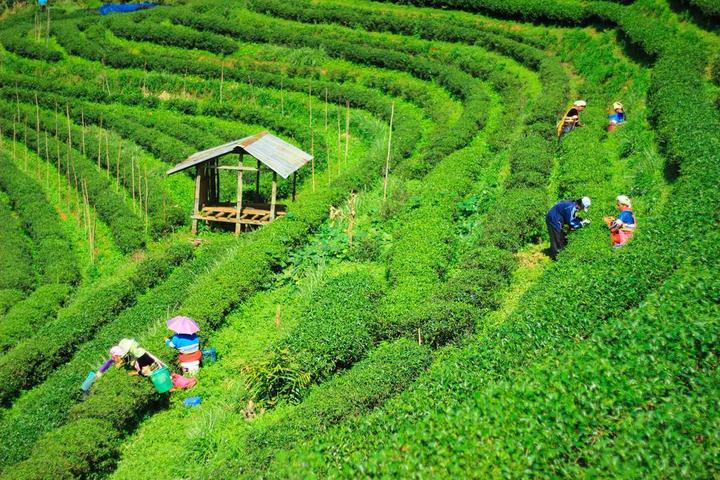
In the urban area of Singapore, the idle roof of a 6-story parking building has been transformed into a farm, densely lined with dozens of rows of shelves planted with various vegetables. A staff member is picking lettuce. He held the vegetable leaves in one hand, cut off the roots in the other, weighed them, and placed them in the packaging bag. In a moment, the stroller on the aisle was filled with bags of lettuce. These lettuce are first transported to the cold storage for storage, and then sent to supermarkets and restaurants for sale, “said farmer Wu Lijiao.72.pngThe workers on the rooftop farm are working (Image source: BBC)Singapore has a population of nearly 5.5 million, with only about 1% of its land used for agricultural cultivation, and over 90% of its food relies on imports. In 2020, the Singapore government began leasing the roofs of some parking lots and transforming them into vegetable farms to provide more vegetables for the public, as part of the Singapore government’s food production plan. In the past two years, Singapore has established nearly 20 similar farms. Wu Lijiao’s “Parking Farm” is the first successful farm to provide 100 to 400 kilograms of vegetables per day to nearby retailers.73.pngRoof Farm (Image Source: Online)In addition to parking lot roofs, the roofs of many high-rise buildings in Singapore have also been converted into farms. In 2013, a shopping center in Singapore built its first rooftop farm that directly supplied restaurants, covering an area of nearly 600 square meters and harvesting up to 1 ton of vegetables and spices per month. In recent years, more and more shopping centers have transformed their roofs into farms. Thai landscape designer Gocha Kung Vodakang commented that Singapore has one of the highest population densities in the world. Utilizing idle spaces such as roofs and turning them into farms not only helps increase agricultural production, but also serves as a greenery.Many buildings are equipped with “green areas” with fruits and vegetables growing inside. Located in the Central Business District of Singapore, Jin Kai Yuan Center is a 51-story office building with a height of 280 meters. On the 17th to 20th floors of the building, there is a distinctive vertical farm, with 40 layers of vegetable planting racks arranged on each 9-meter-high and 3-meter-wide three-dimensional frame. Each three-dimensional frame can simultaneously plant over 1920 vegetables. These three-dimensional frames rotate every 8 hours to ensure that each layer of vegetables can enjoy light.Professor Chen Weining from Nanyang Polytechnic University in Singapore stated that building such farms in Singapore is one of the efforts made to ensure food security. In addition to implementing subsidy measures, the government should encourage and support these farms to adopt advanced agricultural technologies and harvest higher yields with less space and land.Currently, there are approximately 240 urban farms in Singapore, which can meet approximately 10% of the country’s annual food supply. The Singapore government plans to increase the proportion of local agricultural product supply to 30% by 2030. Akert, a scholar at the Lee Kuan Yew School of Public Policy of the National University of Singapore, believes that high operating costs are the main challenge facing the development of Singapore’s urban farms, and farm operations still rely on government subsidies. In the future, Singapore should continue to invest in agricultural technology, continue to promote the development of urban farms, and make various types of farms more commercially viable.

No reply content